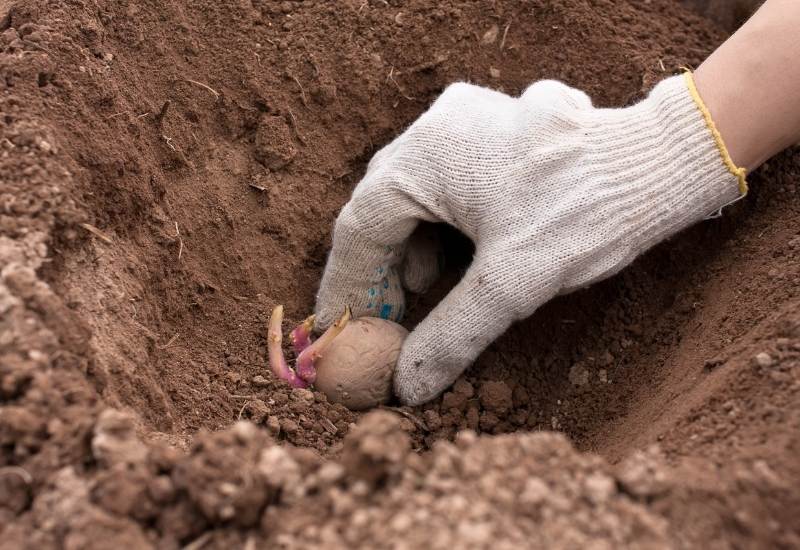
This is a surprisingly complicated question.
Potatoes are tubers, not roots, which means they are an enlarged portion of the stem. This means potatoes don’t naturally grow down into the soil, but rather send runners out from the stem near the surface.
How deep you plant potatoes depends on what variety you are planting, what growing method you’re using, and how often you plan on hilling. In general, though, potatoes should be planted 4” – 6” deep into loose, fertile soil. If they are planted too deep or don’t have access to light within the first few inches of growth, the plant will rot.
However, most of the information on how deep to plant potatoes is based on gardeners who plant in the ground.
Potatoes are a high-reward crop, and more home gardeners are looking at ways to fit a few potato plants into small, compact gardens and vertical growing spaces. Some specialty growers are even growing potatoes in hydroponic systems.
So, the rules for how deep to plant a potato are changing.
Does a Potato Need to be Grown in Soil?
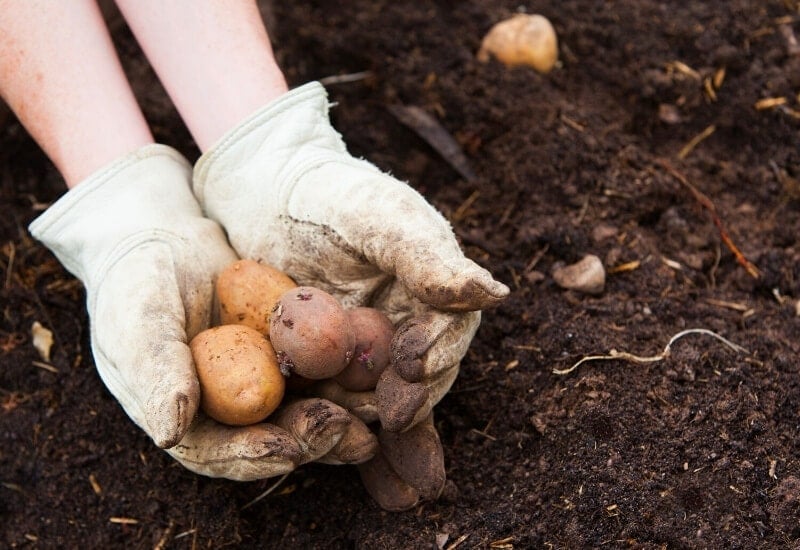
Nope.
Plants need nutrients, moisture, and light to support growth. Soil can provide and hold water and nutrients for plants, but its main role is to give plants a firm foundation.
If potatoes have adequate light and a solid foundation, they can be grown in any media that provides water and holds nutrients.
Although potatoes don’t need to be grown in soil, they do need to be grown in the dark. Tubers that are exposed to sunlight may turn green as a result of too much chlorophyll and solanine. In small doses, these chemicals may cause digestive issues. In extremely large doses, they may cause paralysis.
Whether you decide to grow in soil, compost, mulch, or water, make sure you have a way to block the developing tubers from sunlight.
5 Different Ways to Plant Potatoes
Traditionally, potatoes are grown in rows in the ground. However, as farming has evolved, so has the growing methods of the humble potato.
There are 5 established ways to grow a potato:
How deep you plant potatoes in each system depends on how you plan on covering the stem during the growing season.
It’s easier to plant potatoes in trenches or containers because you can fill the hole as the plant grows.
If you decide to plant potatoes even with the top of the soil or container, you will have to use more soil or mulch around the stem throughout the season, which may be difficult to contain.
How Deep to Plant Potatoes in Rows?
This is the simplest way to plant potatoes, but it is one of the more difficult ways to grow potatoes.
To Plant Potatoes In Rows:
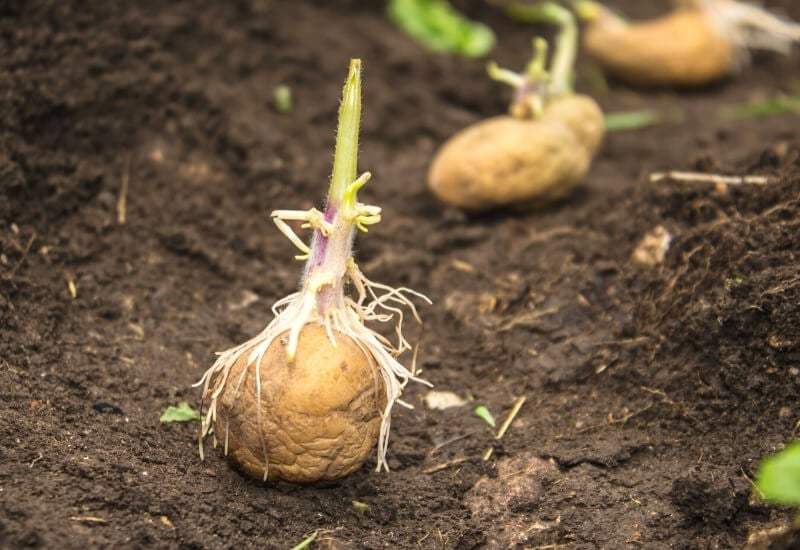
This method gets potatoes in the ground quickly without much soil preparation. However, there are a few problems with planting potatoes this way:
If you have extremely compacted or rocky soil, planting in rows may be the best option because you can skip tedious hours of tilling, raking, and adding compost (although that would be the ideal solution).
Otherwise, if your soil is workable, it’s better to plant in trenches.
How Deep to Plant Potatoes in Trenches?
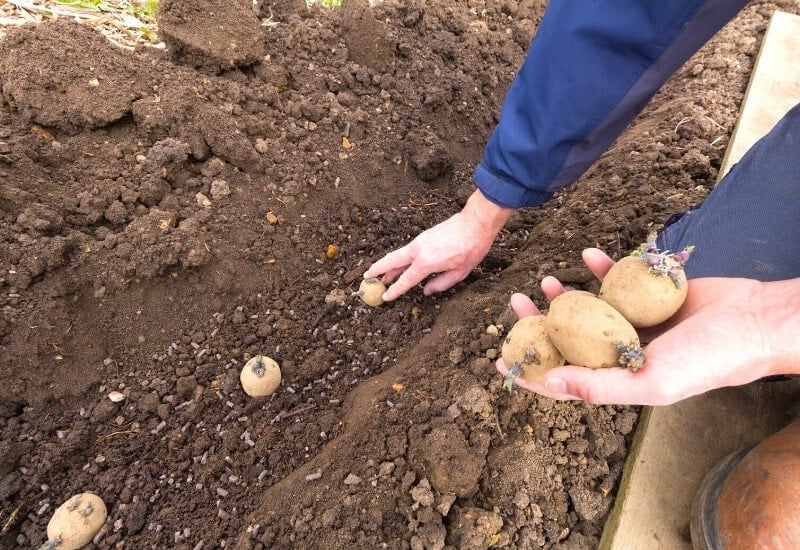
Trenching is the most efficient way to plant large amounts of potatoes, but it does require more labor upfront.
Plant seed potato sprout-side-up in a planting hole or trench 6 to 8 inches deep and cover with 4 inches of soil.
To Plant Potatoes In Trenches:
This method gives the potatoes more room to develop, because they are buried deep into the surrounding soil.
Common problems with the trenching method include:
Although trenching is the most efficient way to plant potatoes in the soil, it may not work well in wet climates with loose soils. Consider using raised beds or containers if you live in a wet climate.
How Deep to Plant Potatoes in Raised Beds?
How you plant potatoes in raised beds depends on what else you are growing in the container.
If you are growing an entire raised bed of potatoes, you have the option to fill the bed part way and then continue to fill it as the potatoes grow.
If you are growing a few potato plants in a raised bed mixed with lettuce, tomatoes, peppers, herbs, carrots, etc., then the planting process is less invasive so as not to disrupt the root systems of other plants.
To Plant A Raised Bed Full Of Potatoes:
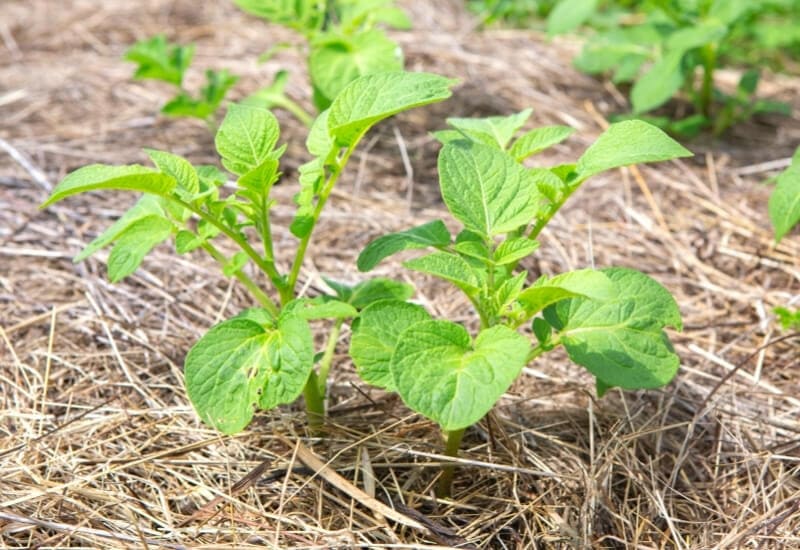
Potatoes are easier to harvest if they are planted in their own raised bed instead of planted amongst other vegetables. If you do dedicate a raised bed to potatoes, do not use the same raised bed to plant potatoes for at least 4 years, and ideally, you should discard the soil.
To Plant A Few Potatoes In A Raised Bed With Other Vegetables:
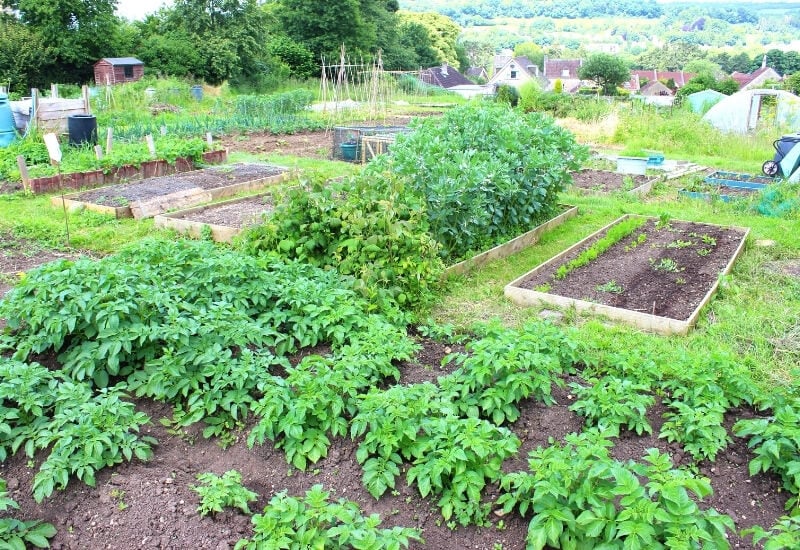
Potatoes in raised beds may have a higher yield because the soil is looser, but the dense spacing of raised beds can restrict nutrition, so you should use a slow-release fertilizer during the growing season to keep plants happy.
This is similar to planting potatoes in raised beds, but containers usually only house individual plants. The major benefit to planting potatoes in containers is that you can fill the container as the plant grows, and then dump the container out at the end of the year for an easy harvest.
You can use lots of different containers for potatoes:
How Deep To Plant Potatoes In Container?
The planting depth of potatoes growing in containers and grow bags should not too deep, You can plant seed potatoes 2 to 4 inches deep and then cover with another 10cm (4in) layer of growing medium.
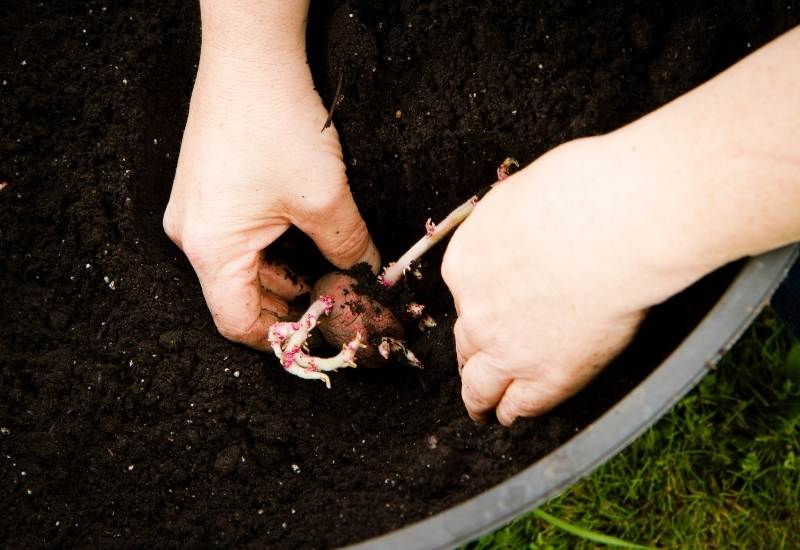
Although it is popular to grow potatoes in bags, there is one major drawback: rot.
Trash bags, compost bags, and soil bags don’t breathe, so they can hold heat and moisture during the growing season which can cause the tubers to mold or rot.
Poke holes in the bottom of the bags for drainage. But, if you have the option, plant into burlap or commercial potato bags.
How Deep to Plant Potatoes in a Hydroponic System?
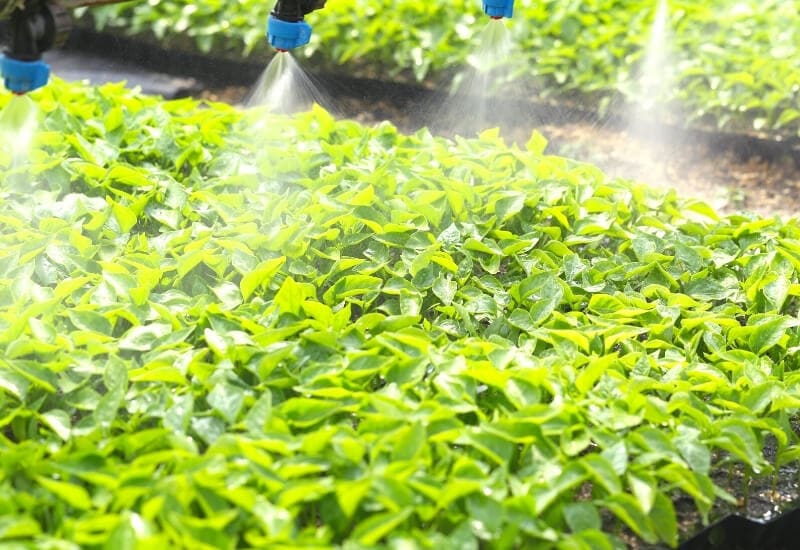
This is a fairly new way to plant potatoes, but it’s quickly becoming popular as hydroponics becomes a more sustainable way to grow vegetables.
There are two basic hydroponic systems:
Although there are other hydroponic systems, each is a branch of one of these two methods.
Flood & drain hydroponic systems flood the root zone for 15 minutes, then drain the water back into a holding tank for 45 minutes. The cycle repeats each hour, so the roots have a consistent source of moisture, but they aren’t saturated.
In flood & drain systems, plants are placed into inert, soilless growing media for stability. So, imagine a plastic tote is filled with perlite, pebbles, or clay balls. The plants are “planted” into this growing media, and once per hour, the tub is filled with a nutrient-rich solution that feeds the roots.
Then, the tub drains back into a reservoir, and the growing media has a chance to breathe.
This system works best for plants that need a strong foundation or have heavy top growth.
Deep water culture systems are constantly full of flowing water, and plants are suspended above the water in containers or on floating Styrofoam boards.
The water is constantly cycled through filters and back into the system. The water is aerated, but at least part of the root system is always submerged.
This system works best for light plants with lots of top growth.
Flood & drain systems are best for potatoes, because it will support the tubers while promoting air flow.
If you want to grow potatoes in a hydroponic system, use a mixture of perlite, vermiculite, and peat for best results.
Grow potatoes in dark-colored plastic totes or bins with a lid or cover for the top to block light.
To Plant Potatoes In A Hydroponic System:
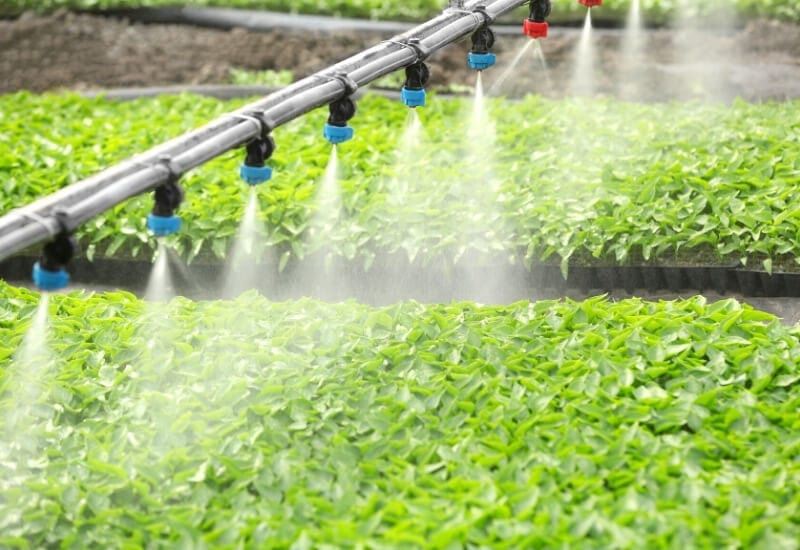
You could also fill the bins half full of media and gradually add new media to cover the stems, but this may shock the system if you add too much too quickly.
Hydroponic potatoes rarely reach the same size as potatoes grown in soils. However, they may have a higher yield of small potatoes, and you can grow them indoors year-round with a grow light.
No matter which growing method you choose, growing potatoes is a fun and rewarding experience. The plants are surprisingly tough, so if you’re not sure exactly how to plant them, just dig a hole and hope for the best.
Happy gardening!


Written By
Amber Noyes
Amber Noyes was born and raised in a suburban California town, San Mateo. She holds a master’s degree in horticulture from the University of California as well as a BS in Biology from the University of San Francisco. With experience working on an organic farm, water conservation research, farmers’ markets, and plant nursery, she understands what makes plants thrive and how we can better understand the connection between microclimate and plant health. When she’s not on the land, Amber loves informing people of new ideas/things related to gardening, especially organic gardening, houseplants, and growing plants in a small space.
